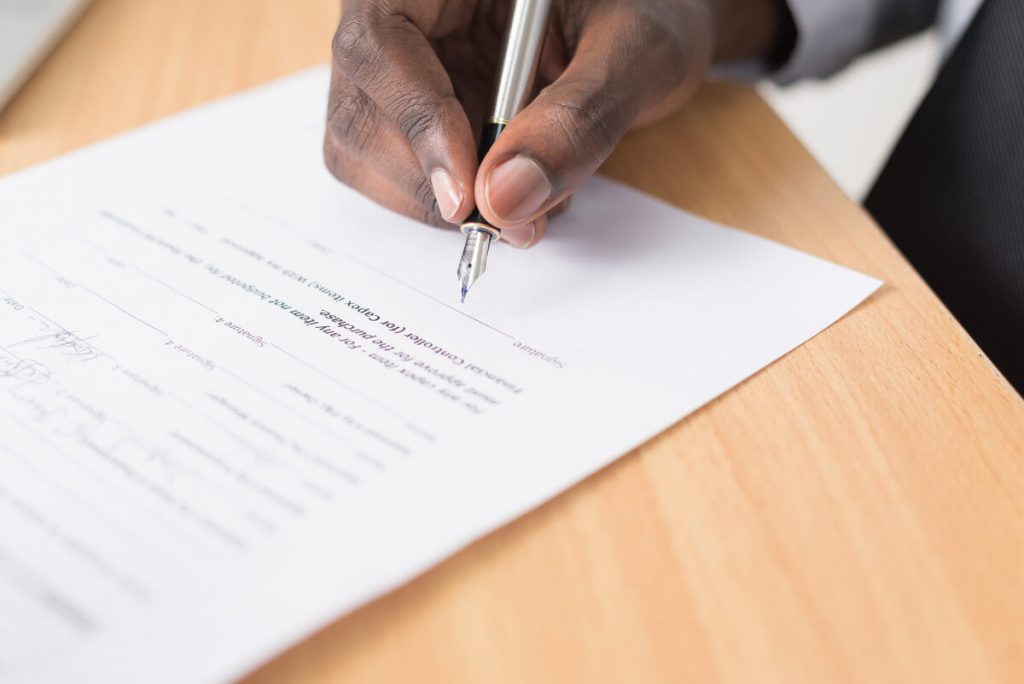Welcome to a regular series powered by Blakes to help startups and entrepreneurs. In each article, a Blakes legal expert tackles common scenarios facing founders today (disclaimer below).
Scenario: Alice and Bob are co-founders of an AI company that has developed a unique software-based tool that detects anomalies in electronic transactions. The software tool provides a significant competitive advantage when used in detecting fraudulent bank transactions.
Alice and Bob want to know how to protect their innovations in the tool. They’ve heard that algorithms and mathematical equations cannot be patented and want to know how they can protect their tool with a patent.
What can be patented
Aside from being new and inventive, to be patentable, the underlying subject matter must be eligible for patent protection in the first place. There is often a misconception that algorithms and software more generally are not patentable. However, in most cases there are aspects that are indeed eligible for patent protection, if proper care is taken to protect them.
It is important to keep in mind that various features can be protected by patents and design registrations, in a multitude of ways.
Consistent with other countries throughout the world, Canada has a broad definition for what constitutes an “invention,” namely any new and useful art, process, machine, manufacture or composition of matter, or any new and useful improvement in any art, process, machine, manufacture or composition of matter. Notice that there is no mention, let alone exclusion, of algorithms or software.
The Canadian Patent Act does explicitly exclude any mere scientific principle or abstract theorem, but the courts have interpreted this as applying to mathematical formulae, natural phenomena, and laws of nature. Sometimes it is this language that is misconstrued as a notion that software (particularly using algorithms that rely on mathematical principles) is not patentable. This is simply not the case. It has been traditionally held that while one cannot use the patent system to exclude others from practicing an underlying mathematical or scientific principle, the practical application of these principles in an invention that meets the definition of invention above, can be (and routinely is) patented.
How software and algorithms can be patented
It is this concept of a practical application that needs to be considered carefully when it comes to software. Importantly, as noted above, an invention must be an art, process, machine, manufacture or composition of matter.
What provides some additional confusion is that a software program per se is not a valid category of patentable invention, and should instead be protected under copyright law (e.g., source code, executable programs, etc.). Instead, a software-implemented invention needs to be protected as a process (method), machine (system), or computer program product (tangible memory storing instructions).

Moreover, it has been clarified in the Amazon “one-click” case before the Canadian Federal Court of Appeal that the computer element(s) must be an essential part of the patent claim (i.e. what you are trying to protect). This means that a software-related patent application needs to be drafted with the “computer problem” in mind, such that the invention you are trying to protect is described in the context of solving a specific problem with the operation of a computer, improving the operation of a computer, or providing an entirely different computer system. It is not enough to merely automate an old process using a computer, or to simply analyze data without some concrete and significant use of the results of the analysis.
Patenting software-based methods
For most software patents, particularly those focusing on algorithms, the claimed invention is typically embodied as a method that involves carrying out particular steps (e.g., according to an “algorithm”) to provide an inventive contribution to a technical field.
For example, a mathematical algorithm or function that can reduce the size of a data packet or encrypt that data packet, when recited as a series of steps applied to the data packet to create a compressed or encrypted data packet in a new way, could be patented as a method. Similarly, an algorithm that reduces the computational efforts in traversing a neural network or that creates a more accurate classifier in a machine learning application, could be patented as a method.
Furthermore, any system (i.e. machine) that includes the necessary technical components (transceivers, processors, memory, etc.) to carry out the method, and the computer-executed instructions, that when executed by a computer carry out the method, can also be patented. Far from being excluded from the patent system, here are three types of patent protection Alice and Bob can consider for their tool.
Graphical User Interfaces and design registrations
The patent system is flexible and can be tailored to account for scenarios such as imminent or prior public disclosures.
Another element of a software solution that can be patented, and is often overlooked, is the graphical user interface (GUI). While GUIs are generally thought of as possessing only copyright and potentially trademark rights, a GUI may possess unique visual and aesthetic properties, and can include innovations related to the user experience (UX), workflows, productivity, safety, or privacy to name a few. Consequently, a GUI can also be protected using design registrations and patents.
Design rights related to GUIs can include animations, icons, portions of a display screen, virtual environments, the look and feel of a customized device, and many other features. The UX, workflow, productivity, safety, and other operational aspects of a GUI can also be eligible for patent protection when these aspects address the computer problem as discussed above.
Your toolkit for protecting software and algorithms
When considering intellectual property protection for software-related innovations, it is important to keep in mind that various features can be protected by patents and design registrations, in a multitude of ways – your software patent ‘toolkit’. The key thing to consider is how your innovation addresses and solves a particular computer problem or creates a new or improved computer system. This can indeed involve the practical application of computer algorithms and mathematical principles, when embodied in a real world application.
The patent process
With the above in mind, Alice and Bob should engage the patent process sooner rather than later to determine if their innovation is patentable, and if so, to prepare and file a patent application and perhaps consider a design registration. They should also keep their invention secret, or have suitable confidentiality provisions in place with other parties, until a patent strategy is in place.
The patent system is flexible and can be tailored to account for scenarios such as imminent or prior public disclosures, prior experimental use, prior sales, inventorship and ownership, and multiple related inventions, along with a myriad of filing strategies to expedite patent protection or to defer costs. This makes the patent process as complex as it is flexible and requires experienced counsel from a patent agent. Alice and Bob’s next steps should be to contact a patent agent to get the process started.
About the Author
 Brett Slaney is a patent agent who brings to Nitro his expertise in developing IP strategies, patent drafting and prosecution, portfolio management, and opinion work regarding patentability, infringement and validity.
Brett Slaney is a patent agent who brings to Nitro his expertise in developing IP strategies, patent drafting and prosecution, portfolio management, and opinion work regarding patentability, infringement and validity.
His practice focuses on patent-related issues in the software, electrical and mechanical fields, with particular emphasis on emerging technologies such as computer vision, AI, big data and the Internet of Things. His professional experience includes servicing clients in the software, hardware, wireless communications, data security, medical devices, automotive electronics, solar energy, process automation, oil and gas, and consumer product industries. Brett provides strategic patent advice for clients ranging from individual inventors, universities, and start-ups, to large multinational corporations, and is responsible for managing patent portfolios of all sizes.
This piece is intended for informational purposes only and does not constitute legal advice or an opinion on any issue. We would be pleased to provide additional details or advice about specific situations if desired.
Photo via Unsplash.


